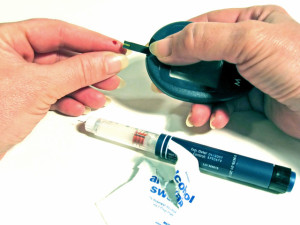John Parks Trowbridge M. D., FACAM
The simple answer is … it’s not so simple. But you must pay attention to what is happening to you and your family to be able to respond accordingly.
Over 27,000 innocent children in Flint, Michigan, have been exposed to startlingly high levels of lead in their city water supply – sometimes 13,000 times the concentration found in nearby localities – for many months, without any warning, even without early official acknowledgment when the problem was identified. Now city dwellers are left with corrosive toxins leaching from their pipes for who knows how long.
So how can you really know “what is happening”? That is the hard part. So let’s make it easier for you to see it right now.
Recent reports suggest that the major “toxic exposure” is to lead. Quite honestly, it is impossible for just lead to be the only poison to which you’re being exposed during this event. Over time, scientists will determine and share their additional discoveries with the public, so that even better treatments can be offered.
Is it true that younger children can suffer more serious damage from lead exposure? The answer “yes” is simple for you to see: brain and nerves and other organs are rapidly developing … and lead strikes right in the middle of these. The results of such poisoning can be horrific.
Studies reported since the early 1980s have documented that higher lead levels in the body “led directly to” falling IQ. Kids sometimes “act dumb” when they’re fooling around – but the tragedy of becoming a permanently “dumb adult” due to preventable brain damage is a life-destroying lifelong handicap.
How will you recognize more serious lead exposure problems? How about decreased bone and muscle growth and poor muscle coordination? Speech and language problems show up along with developmental delay, even seizures and damage to the nervous system and hearing, even to kidneys. Lower but still toxic levels can be seen as irritability or behavioral issues, difficulty concentrating, headaches, loss of appetite with sluggishness or fatigue; belly pains can show with nausea, vomiting, and constipation. Skin color can be pale due to anemia. Some complain of muscle and joint weakness or pain, also a metallic taste.
Adults can show similar system problems, additionally developing as high blood pressure, heart disease, leg circulation diseases and gangrene, declining mental function, memory loss, headaches, mood disorders, changes in sperm counts and even miscarriage or premature birth. Other heavy metals or chemical toxins (even from yeast/mold) can worsen symptoms such as this or create even other discomforting issues.
Sadly, there’s no treatment available for this poisoning. Wait! – that’s not true! But that is exactly what many worried patients (and parents) will hear from their local doctors in Michigan or around the country – “everyone knows that lead poisoning is irreversible.” Commonly used blood testing is almost useless and rarely confirms toxic metal levels. Accurate diagnosis and precise treatment of heavy metal poisoning – such as with lead, mercury, arsenic, nickel, cadmium, even aluminum and others – is a specialty in medical practice that has evolved over the past 60 years.
What are the TWO key factors that are critical to remove lead that is starting to damage body tissues? First, you need management by a physician who understands and offers a treatment called “chelation” (key-LAY’-shun). FDA-approved medications are available to remove toxic metals – and that is the only effective treatment, nothing else works, not drugs, not surgery, not anything else.
Second, you need chelation treatment that is started early enough and continued long enough. During this treatment program, your specialist will include nutritional supplements to replace “usual” minerals (such as magnesium, zinc, others) that are removed during the treatment for toxic metals, along with vitamins that help to reverse changes due to the poisoning.
The biggest problem that many patients and parents will face is … that doctors and others who have no experience with, or any understanding of, lead poisoning and chelation therapy can discourage you from seeking such treatments. Delay in starting treatment of sudden exposures can result in permanent limitations of brain functions – thinking, intelligence, learning, memory, reasoning, then school performance and later career choices – for a child who depends on his parents to rely on physicians who can find out quickly what is going on and can fix it right.
How successful is chelation therapy at reducing lead deposited in children? Medical studies for years have shown overall excellent results in children when proper treatment is continued as long as each particular patient needs. Each year, over 300.000 young children are found to have unsafe levels of lead in their blood; more definitive tests – urine “challenge” testing, hair analysis – would reveal even more. Adults have already had dozens more years to accumulate lead and other toxic heavy metals from so-called “acceptable” levels in the food, water, and air. Their program is longer because their body burden is much more than just from the recent exposure to poisoned water.
How critical is it for you to avoid further exposure right now? Absolutely required! So you must heed precautions offered by local public health officials. You might need to follow these preventive steps for quite a long time. Tainted water can seep into the underground water table, leading to long term unexpected exposures such as well water, foods from gardens or even farms, public water such as swimming pools or local ponds, rivers, lakes, even city water supplies. What is worrisome is that poisons spread through the environment are much more difficult to remove and might linger for years, causing continuing health challenges long after any “cleanup” has been declared to be completed. The dangers are very real even though invisible.
Did you know that you can “see” and even “smell” lead-laden water, so you can easily avoid drinking it or using for cooking or bathing? That is a myth, pure bunk, a total lie. The only way to protect your children and yourself from continuing poisoning in Flint is to pay attention to recent local water testing that documents the level of toxic heavy metals found over time. Only in this way can you take needed steps to insure pure water and foods for your family – even if you need to make those changes for many months after the cleanup has been reported as concluded.
Is someone to blame for this serious event? Of course. Investigators will find someone who “did something wrong,” that’s obvious. But your usual environment has already been a dangerous place for the last 60 years or more. Lead paints so common in the past (toddlers chewing on window sills or toys), lead gasoline (still used for small airplanes), lead pipes and bootleg stills (lead solder) are easy examples, often explaining gradual toxic accumulations seen now in adults. The Flint water poisoning is a more acute event that suddenly changes everything for a large number of unsuspecting people – infants, children, and adults of all ages – adding further to their underlying body burden of lead and other toxic metals already accumulated over their lifetime.
Is there a bright spot in this disastrous event? Only this: many thousands more people will learn now of the tremendous healing powers of chelation therapy. A few hundred physicians around the country have been trained to deliver chelation therapy, and various approved drugs are available. Beyond rescuing exposed children from a lifetime of lower potential and performance, the reduction of toxic heavy metals by chelation has been documented to improve a wide variety of conditions in virtually every organ. Reducing right now the lead levels in exposed children is essential to minimize or delay later crises as adults suffering heart attacks, high blood pressure, leg artery diseases and gangrene, loss of vision, and much, much more.
Who will really care about your family and your situation in the future? The “news cycle” will soon move on to other headlines and you will be left stranded with the tattered remains of your life. Take advantage now of this opportunity to find a specialist who could help you with your poisoning problems. To consult with a specialist physician who has training in chelation therapy, contact the International College of Integrative Medicine (www.chelation.me) or the American College for Advancement in Medicine (www.acam.org). Be diligent in your search and review the doctor’s credentials conscientiously. Remember: your toxic metal problem (from whatever source) is a serious health challenge and needs treating now … it’s urgent to get the lead out!
ICIM member John Parks Trowbridge M. D., FACAM, has been recognized as a specialist in chelation therapy since1985. Recognized as an expert in various fields of integrative/”alternative” medicine, he has served as a leader of several professional organizations, has written books and published CDs and DVDs, and has lectured across the country and around the world.
CONTACT: 281-540-2329, telefacsimile 281-540-4329
speciallch@earthlink.net, info@healthCHOICESnow.com


